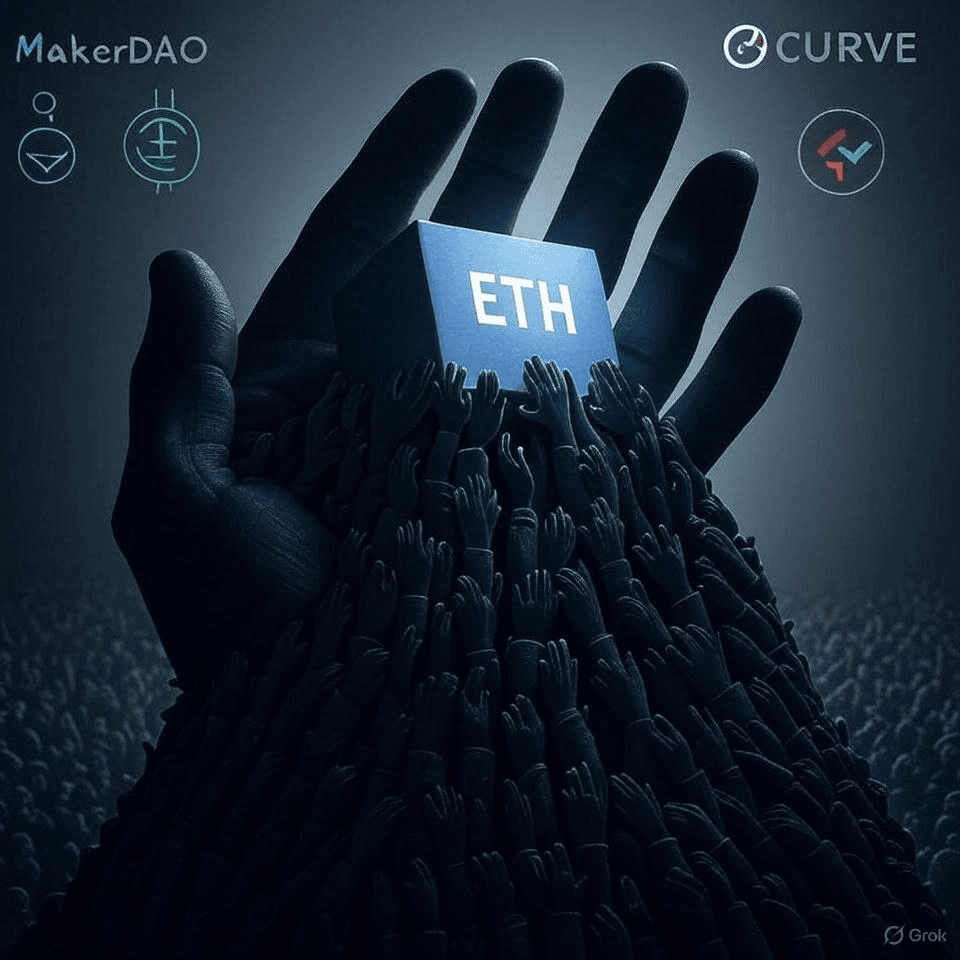When we talk about decentralized finance (DeFi), an ideal scene often comes to mind: a world without intermediaries, without central authority, where everyone has complete control over their money.
But reality is not always that simple. The truth is that liquidity, which fuels DeFi, has started to accumulate in the hands of a few players.
So who really controls DeFi today? And why are difficult questions being raised about the extent of "true decentralization" in this field?
💧 Liquidity = Power
In the world of DeFi, liquidity is the key to everything:
A decentralized exchange platform like Uniswap or Curve cannot operate without liquidity providers.
Protocols that offer lending (like Aave and Compound) do not exist without liquidity.
The more liquidity there is, the greater the efficiency. But the more it concentrates, the greater the control.
🐳 Whales and dominant protocols
Often, liquidity accumulates in a few:
Major protocols: like Lido (which controls a massive share of staked Ethereum), or MakerDAO (which controls the issuance of DAI).
Major liquidity providers (Whales): investment funds or individual whales putting in hundreds of millions of dollars, controlling trends in liquidity, yields, and even voting within governance.
Central entities hide behind decentralized facades: sometimes protocols are "open source," but actual control over contracts or governance remains with a team or company.
🧠 Some real-world examples:
Lido Finance (LDO token):
It is considered one of the largest protocols in the staking field for Ethereum. However, the massive accumulation of ETH has raised concerns about the centralization of "staked Ethereum."
MakerDAO (MKR token):
It is the issuer of DAI, one of the most popular decentralized stablecoins. It is controlled by a few large entities that have high voting power over governance decisions, such as interest rates or the type of collateral.
Curve Finance (CRV token):
Due to a complex voting system known as veCRV, larger CRV holders control the distribution of rewards and liquidity among pools. This has created competition known as "Curve Wars."
⚖️ Are we really in a decentralized system?
The complex answer: yes and no.
Yes, because the code is open, accessible to everyone, and transparency is high.
But also "no" because those who own liquidity hold the power, influence, and voting rights.
Decentralization does not only mean opening doors, but distributing power. This has not been fully achieved yet.
🧭 Where is DeFi heading?
Many new protocols have started experimenting with smarter governance models, encouraging fair distribution of liquidity.
Layer 2s also lower entry costs, which may help smaller users participate more widely.
But the most important question remains:
Will DeFi remain an open tool for everyone? Or will it gradually turn into a closed club controlled by the elite?
